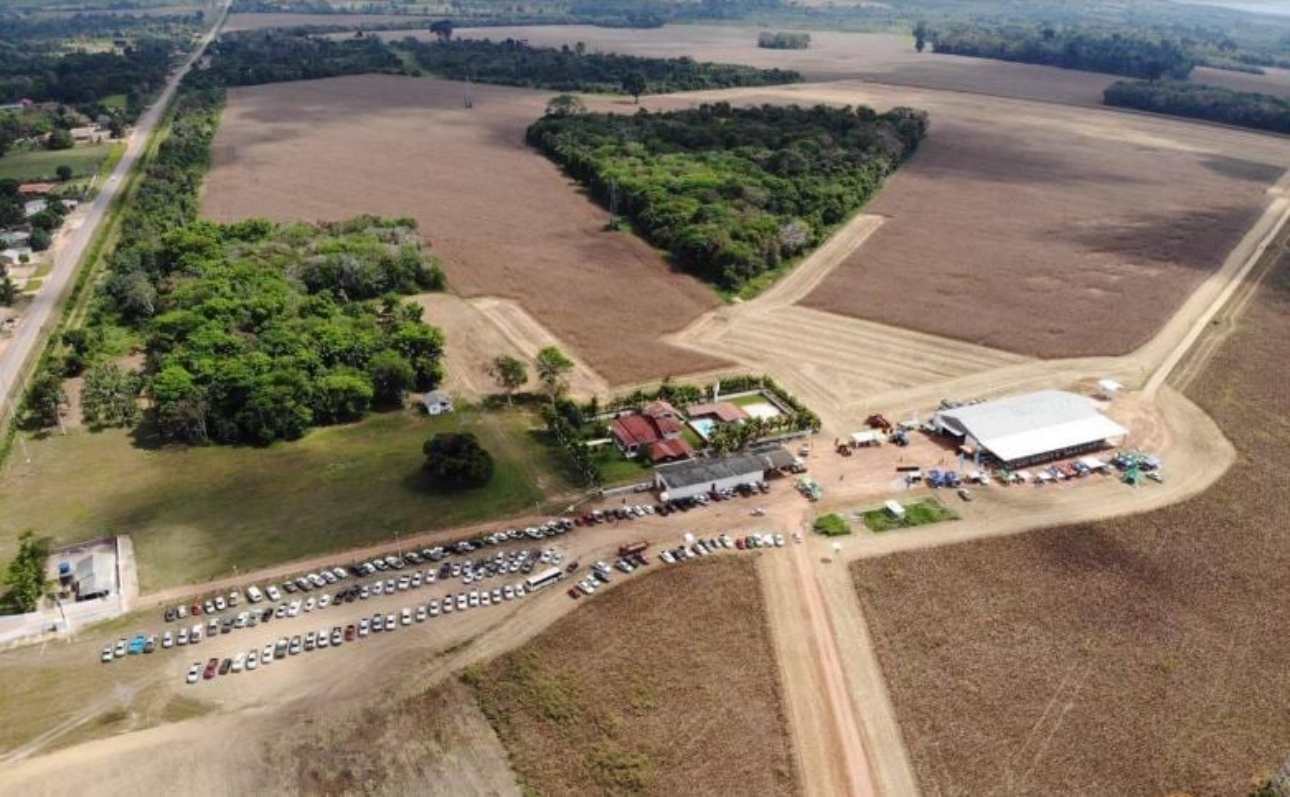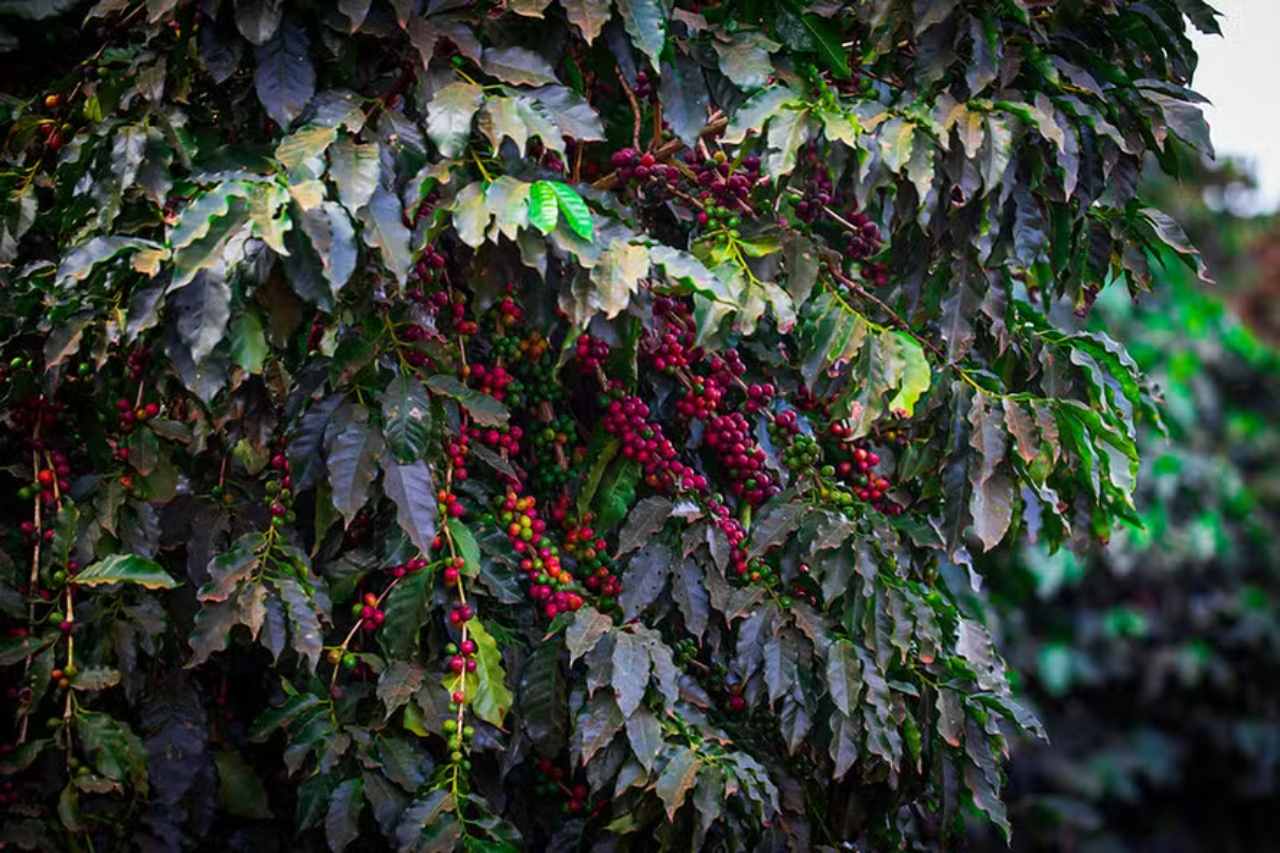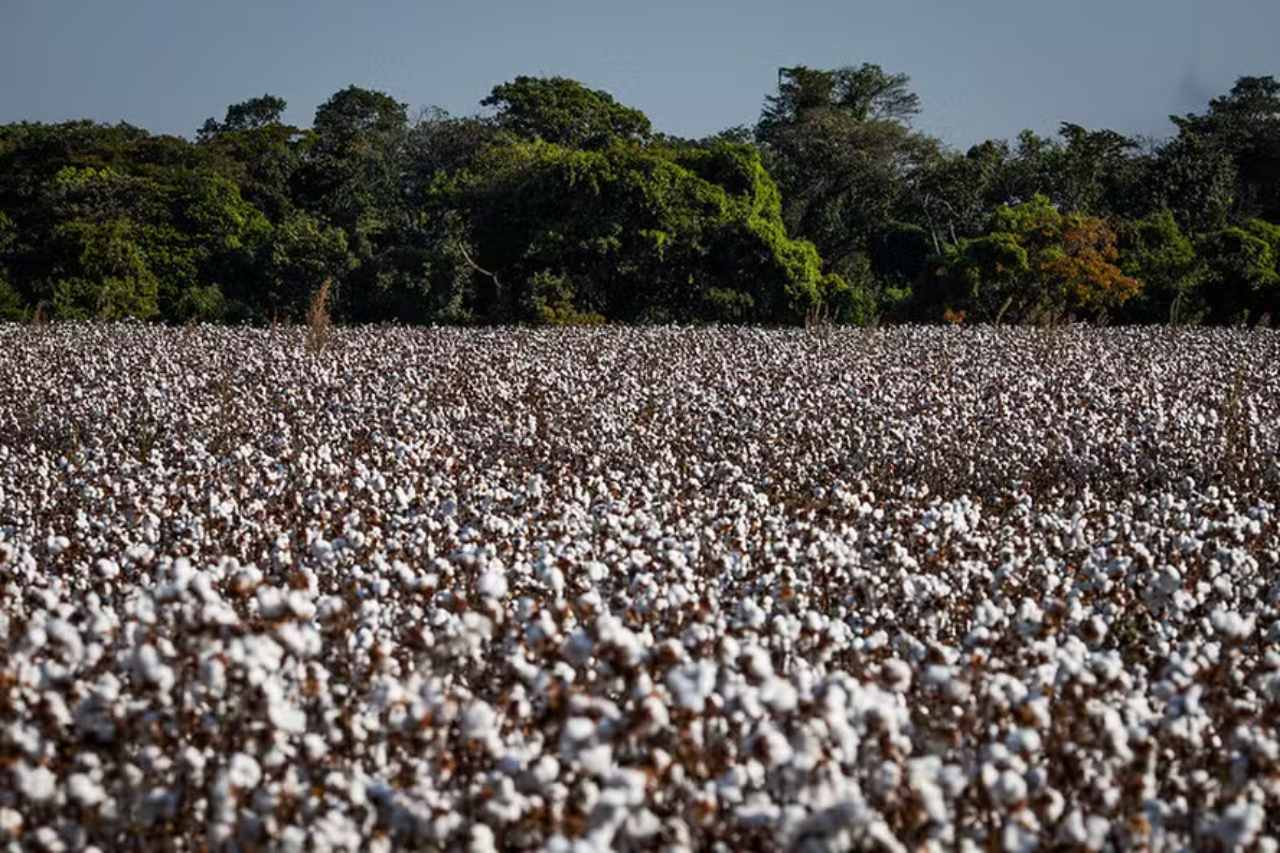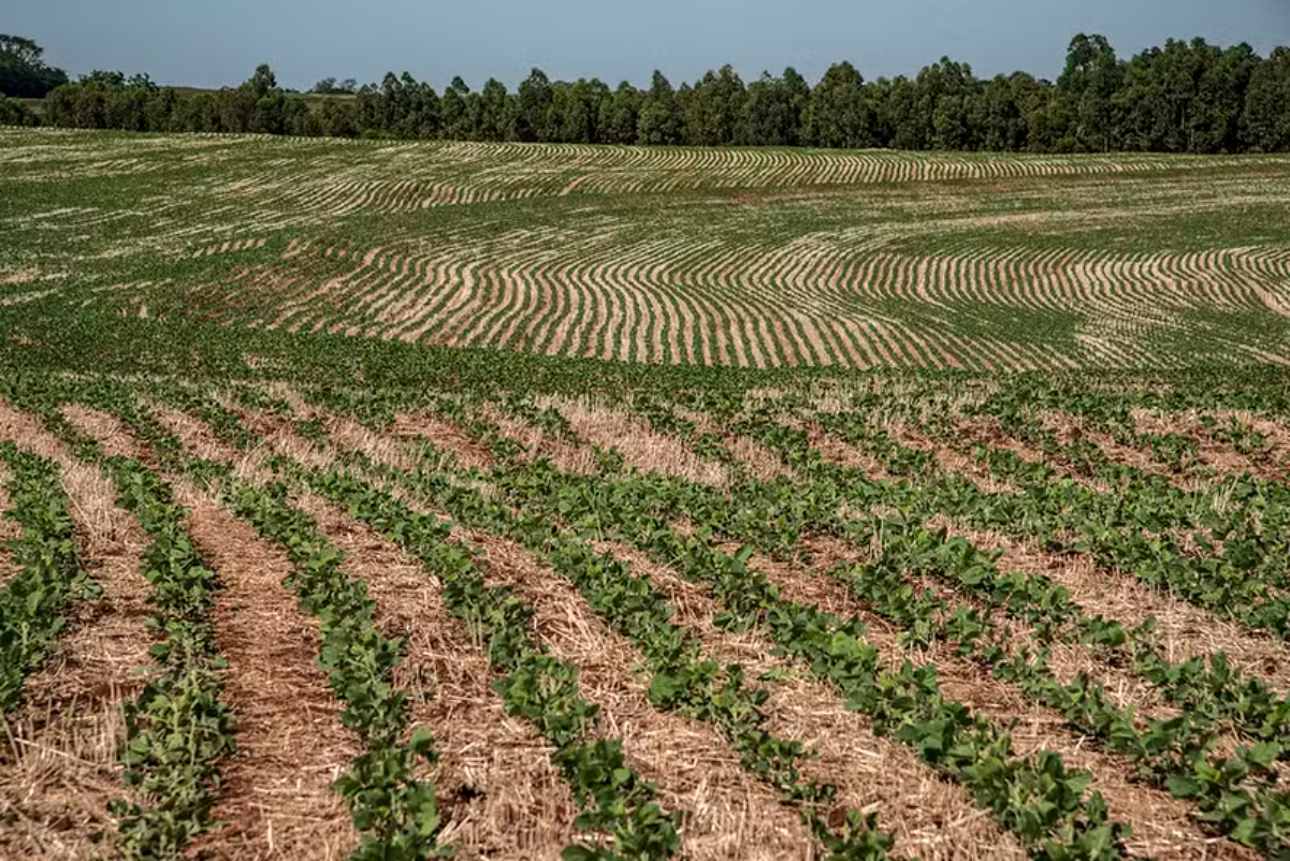A study by the Ministry of Agriculture reveals that their agricultural production totals R$ 260 billion.
The Brazilian Ministry of Agriculture and Livestock mapped out the 100 wealthiest municipalities in the agribusiness sector. The analysis is based on data from the IBGE’s Annual Survey of Municipal Agricultural Production (PAM).
In 2023, total agricultural production reached R$ 814.5 billion, with the top 100 municipalities accounting for 31.9% of this amount, totaling R$ 260 billion.
These municipalities are located across 14 Brazilian states: Bahia, Distrito Federal, Goiás, Maranhão, Mato Grosso, Mato Grosso do Sul, Minas Gerais, Pará, Paraná, Pernambuco, Piauí, Rio Grande do Sul, São Paulo, and Tocantins.
The Center-West Takes the Lead
The Center-West region stood out, with Mato Grosso leading the way, hosting 36 of the most productive municipalities in the country, according to the ministry’s findings.
The municipality of Sorriso, in Mato Grosso, claimed the top spot with a production value of R$ 8.3 billion, followed by São Desidério, in Bahia, with R$ 7.8 billion.
These 100 wealthiest municipalities in terms of production value cover 33.1 million hectares, representing 34.5% of Brazil’s total harvested area of 95.8 million hectares.
The data covers 70 different crops, both temporary and permanent, cultivated across 5,563 municipalities. Soybeans remain the most significant crop, contributing R$ 348.6 billion, or 42.8% of the total agricultural production value.
Top 100 Wealthiest Agribusiness Municipalities in Brazil
- Sorriso (MT) – R$ 8,813 bilhões
- São Desidério (BA) – R$ 7,989 bilhões
- Sapezal (MT) – R$ 7,564 bilhões
- Campo Novo do Parecis (MT) – R$ 7,157 bilhões
- Rio Verde (GO) – R$ 6,924 bilhões
- Diamantino (MT) – R$ 5,695 bilhões
- Formosa do Rio Preto (BA) – R$ 5,692 bilhões
- Nova Ubiratã (MT) – R$ 5,387 bilhões
- Jaciara (MT) – R$ 4,806 bilhões
- Nova Mutum (MT) – R$ 4,582 bilhões
- Cristalina (GO) – R$ 4,435 bilhões
- Querência (MT) – R$ 4,320 bilhões
- Maracaju (MS) – R$ 4,083 bilhões
- Primavera do Leste (MT) – R$ 4,017 bilhões
- Paranatinga (MT) – R$ 3,495 bilhões
- Campo Verde (MT) – R$ 3,493 bilhões
- Luís Eduardo Magalhães (BA) – R$ 3,478 bilhões
- Balsas (MA) – R$ 3,672 bilhões
- Santo Antônio do Leverger (MT) – R$ 3,609 bilhões
- Ribeirão Cascalheira (MT) – R$ 3,372 bilhões
- Uruçuí (PI) – R$ 3,323 bilhões
- Rondonópolis (MT) – R$ 3,116 bilhões
- Porto Nacional (TO) – R$ 3,110 bilhões
- Montividiu (GO) – R$ 3,108 bilhões
- Nova Maringá (MT) – R$ 2,971 bilhões
- Barreiras (BA) – R$ 2,904 bilhões
- São Raimundo das Mangabeiras (MA) – R$ 2,881 bilhões
- Dueré (TO) – R$ 2,848 bilhões
- Santa Rita de Cássia (BA) – R$ 2,834 bilhões
- Tabaporã (MT) – R$ 2,758 bilhões
- Itiquira (MT) – R$ 2,744 bilhões
- Miracema do Tocantins (TO) – R$ 2,577 bilhões
- Sorriso (MT) – R$ 2,524 bilhões
- Formosa do Rio Preto (BA) – R$ 2,497 bilhões
- Santa Rita de Cássia (BA) – R$ 2,334 bilhões
- Luís Eduardo Magalhães (BA) – R$ 2,312 bilhões
- Canarana (MT) – R$ 2,258 bilhões
- Primavera do Leste (MT) – R$ 2,211 bilhões
- Alto Araguaia (MT) – R$ 2,201 bilhões
- Rio Brilhante (MS) – R$ 2,135 bilhões
- Itaquiraí (MS) – R$ 2,133 bilhões
- Santa Rita do Trivelato (MT) – R$ 2,120 bilhões
- Santo Antônio do Leverger (MT) – R$ 2,112 bilhões
- Itapirapuã (GO) – R$ 2,091 bilhões
- Petrolina (PE) – R$ 2,117 bilhões
- Riachão das Neves (BA) – R$ 2,098 bilhões
- Costa Rica (MS) – R$ 2,087 bilhões
- Perdizes (MG) – R$ 2,045 bilhões
- São José do Rio Claro (MT) – R$ 2,019 bilhões
- Jussara (GO) – R$ 2,014 bilhões
- Palmas (TO) – R$ 1,993 bilhões
- Sapezal (MT) – R$ 1,989 bilhões
- Diamantino (MT) – R$ 1,879 bilhões
- Pium (TO) – R$ 1,819 bilhões
- Abadiânia (GO) – R$ 1,808 bilhões
- Campo Verde (MT) – R$ 1,776 bilhões
- Santo Antônio do Leste (MT) – R$ 1,755 bilhões
- Abaeté (MG) – R$ 1,736 bilhões
- Sapezal (MT) – R$ 1,719 bilhões
- Diamantino (MT) – R$ 1,681 bilhões
- Nova Ubiratã (MT) – R$ 1,623 bilhões
- Rondonópolis (MT) – R$ 1,594 bilhões
- Gurupi (TO) – R$ 1,591 bilhões
- Nobres (MT) – R$ 1,580 bilhões
- Cáceres (MT) – R$ 1,578 bilhões
- Goiânia (GO) – R$ 1,560 bilhões
- Primavera do Leste (MT) – R$ 1,507 bilhões
- Chapadão do Céu (GO) – R$ 1,504 bilhões
- São José do Xingu (MT) – R$ 1,494 bilhões
- Formosa (GO) – R$ 1,468 bilhões
- São Félix do Xingu (PA) – R$ 1,451 bilhões
- Nova Maringá (MT) – R$ 1,445 bilhões
- Chapadão do Sul (MS) – R$ 1,432 bilhões
- Ribeirão Cascalheira (MT) – R$ 1,426 bilhões
- São José do Rio Pardo (SP) – R$ 1,374 bilhões
- Tocantínia (TO) – R$ 1,344 bilhões
- Santa Vitória do Palmar (RS) – R$ 1,337 bilhões
- Jataí (GO) – R$ 1,328 bilhões
- Formosa do Rio Preto (BA) – R$ 1,319 bilhões
- Cáceres (MT) – R$ 1,314 bilhões
- Itiquira (MT) – R$ 1,297 bilhões
- Rondonópolis (MT) – R$ 1,276 bilhões
- Acrelândia (AC) – R$ 1,252 bilhões
- Barra do Garças (MT) – R$ 1,239 bilhões
- Querência (MT) – R$ 1,237 bilhões
- Santa Rita do Trivelato (MT) – R$ 1,235 bilhões
- Monte Alegre (GO) – R$ 1,234 bilhões
- Dourados (MS) – R$ 1,221 bilhões
- Bom Jesus (PI) – R$ 1,204 bilhões
- Jussara (GO) – R$ 1,197 bilhões
- Nobres (MT) – R$ 1,191 bilhões
- Itapirapuã (GO) – R$ 1,187 bilhões
- Araputanga (MT) – R$ 1,184 bilhões
- Buritis (MG) – R$ 1,180 bilhões
- Bom Jesus (GO) – R$ 1,179 bilhões
- Santo Antônio do Leste (MT) – R$ 1,173 bilhões
- Jataí (GO) – R$ 1,171 bilhões
- Uberlândia (MG) – R$ 1,169 bilhões
- Formosa do Rio Preto (BA) – R$ 1,159 bilhões
- Jaciara (MT) – R$ 1,149 bilhões
These municipalities showcase the strength and potential of Brazilian agribusiness, underscoring the sector’s importance in the national economy.
Follow Brazil Agriculture for more relevant news.





